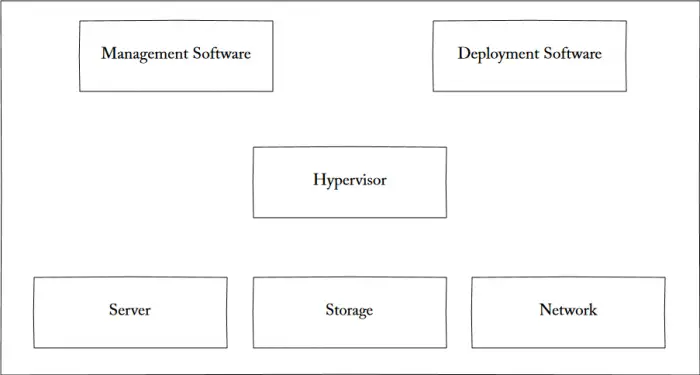Cloud technology also has a specific type of infrastructure that allows it to give so much advantage to its users. Cloud computing, as a whole, is a combination of different hardware and software that makes cloud technology working utterly wonderful.
Defining Cloud Infrastructure
It refers to the software and the hardware components such as storage drive, hardware, servers, virtual software, other cloud management software, and other networking devices; all work together to support the computing requirement of the cloud computing model. Moreover, cloud technology holds a software abstraction layer that virtualizes the cloud resource and locally presents them to users.
Cloud Infrastructure Management Interface (CIMI) is an open standard API used to manage the cloud infrastructure. It enables its users to easily handle all the cloud infrastructure by providing a means to interact with the provider & their consumer or developer.
Figure - Components of Cloud Infrastructure:

Explaining The Above Diagram
The hypervisor can be defined as the firmware (a permanent set of instruction or code programmed into the read-only memory & is a low-level program) that acts as a virtual machine manager. It is also called the Virtual Machine Monitor (VMM), which creates & runs the virtual machine. It provides the guest OS with a virtual operating platform to manages the execution of other applications. There are two types of hypervisors.
These are:
- Native Hypervisor
- Hosted Hypervisor
In cloud technology, virtualized resources are kept & maintained by the service provider or IT department; these resources comprise servers, memory, network switches, firewalls, load-balancers & storage. In the cloud computing architecture, the cloud infrastructure referred to the back-end components of the cloud.
- Management Software firstly helps to configure the infrastructure then maintaining it. The Deployment software, on the other hand, is used to deploy & combine all applications on the cloud.
- Network, as we all know, is the key part of cloud technology, allowing users to connect to the cloud via the internet. Multiple copies of data are kept stored in the cloud. If any storage resource fails - then the data can be extracted from another one. So, storage is another essential component of cloud infrastructure.
- Server helps to handle & compute all cloud resources & offer services like allocation, de-allocation, sharing and monitoring the cloud resources, and in some cases, used to provide security.
Restrictions or Limitations of Cloud Infrastructures
The limitations of cloud technology concerning infrastructure are:
- Scalability
- Intelligent Monitoring
- Security